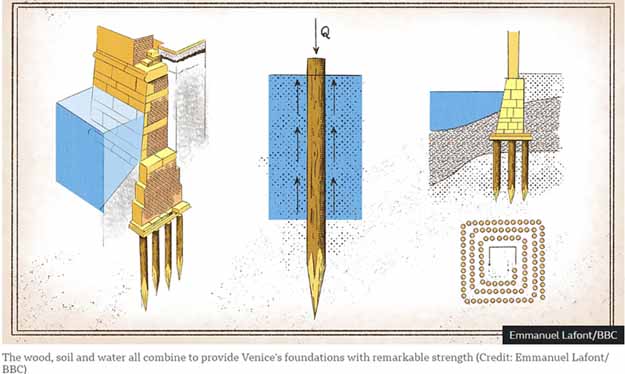
As any local knows, Venice is built on an upside-down forest. It is an ingenious feat of engineering that lies underneath the picturesque cityscapes and waterways the city is famous for. Beneath the beautiful architecture lie millions of wooden trees that have lasted for 1604 years.

Built on a lagoon, the city’s early architects chose not to use stone for their foundation. Instead, they hammered tree trunks or piles, with the bottom end sharpened like a pencil, into the ground. By placing these piles into dense clusters, the substantial friction between wood and the ground surface led to hydrostatic pressure, where the soil grips the piles and holds them in place. Over time, minerals from the water and soil seeped into the wood petrifying it and making it stone-like helping it last for centuries.

The piles were hammered into the ground by hand by ‘battipali’ or ‘pile hitters’. They would hammer them into the ground until they couldn’t be pounded any further and then shaved the top down to be flat. A wooden platform and a stone foundation were added and then the beautiful buildings Venice is known for. It was an enormous effort with an estimated 8-16 million piles driven into the lagoon floor with 10,000 piles supporting the San Marco Basilica and 14,000 for the Rialto bridge alone.
What makes this even more remarkable is that today’s modern construction methods using concrete or steel piles are guaranteed to last just 50 years. Alexander Puzrin, Professor of Geomechanics and Geosystems engineering at ETH University puts it into perspective. “There were people out there who didn’t study soil mechanics and geotechnical engineering, and yet they produced something we can only dream about producing.”
